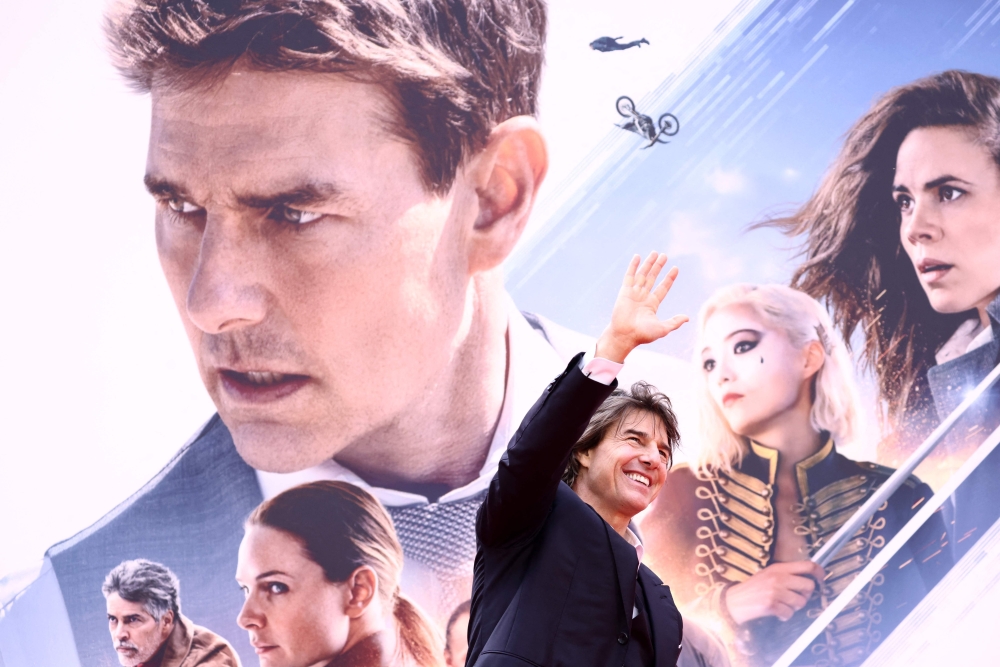JULY 22 — As one franchise after another takes a surprise beating at the box-office, failing to reach their expected/projected targets and surely causing the major Hollywood studios to lose probably hundreds of millions of dollars in the process, the arrival of Mission: Impossible — Dead Reckoning Part One (MI-7) has brought with it another narrative familiar to all of us last year with the arrival of Top Gun: Maverick — Tom Cruise is again here to save the day and keep the blockbuster cinema experience alive for both audiences and movie critics.
Hollywood tentpoles raking in big bucks is something to be expected, as this is what these movies are designed to do, even if quite a few of them will eventually fail to do so.
To witness an actually excellent Hollywood tentpole, however, is another matter altogether, so when you do come across one, it’s really a huge cause for celebration, and MI-7 is, without doubt, a prime example of an excellent Hollywood tentpole.
Add to that the fact that MI-7 is the seventh film in a Hollywood franchise makes that excellence even more remarkable.
When the first Mission: Impossible (MI-1) film arrived in cinemas in 1996, and even though it was directed by one of my all-time favourite directors, Brian De Palma, I never thought that it would turn out to be the beacon of excellence for the Hollywood franchise that it’s become now.
Back then I thought it was just another Hollywood action film and that De Palma was only doing it for the big bucks.
But as the franchise got older, as has its star, the still impossibly young-looking matinee idol Tom Cruise, its whole concept — plenty of reversals, taking off of latex masks, dangerous stunts executed by Cruise himself, and of course, shots aplenty of Cruise running away from danger or to save someone — has somehow aged like fine wine.
The missions/plots themselves, no matter how twisty or convoluted, are merely excuses to string together a series of action set-pieces to show how Cruise aka Ethan Hunt manages to get out of sticky situations.
That’s what all of us are here to see in every single one of the movies in this franchise.
Whether it’s Ethan Hunt vs the Syndicate, or the Apostles, or this time the Entity (an AI that’s become sentient and poses very real dangers to humanity), it’s the specific set-pieces or stunts from each film that will burn themselves into our memories, like the image of Cruise hanging from a plane or scaling the Burj Khalifa.
This latest entry has all of that too, but what makes this one extra special is that, for the first time ever in the franchise, we get to experience how and why someone decides to become an agent for the Impossible Mission Force (IMF).

Cleverly hinting at this during the film’s opening scene, in which Ethan receives his new mission (in the form of a cassette, because the enemy now prowls the digital world) and congratulates the delivery guy for making the right choice in joining the team, the word “choice” becomes a recurring presence in the film, from flashbacks reminding Ethan of the circumstances behind him making the choice to join IMF all the way to us witnessing a new character making the choice to do so as well, with director Christopher McQuarrie and writer Erik Jendresen cleverly putting us in her shoes for much of the film.
This look to the beginning is also echoed in plenty of other elements and set-pieces in the film, from bringing back Henry Czerny as CIA Director Eugene Kittridge (he played the same character in the first film) and putting them in another tense conversation that recalls that restaurant aquarium scene from MI-1 to a climactic showdown on top of a speeding train, which will also remind you of MI-1, it’s almost as if MI-7 is playing with the subtext that these actors from MI-1 who are now also in MI-7 are getting older now, and to pit them against AI just as Hollywood workers are now battling to make sure that their bosses don’t replace them with AI, is to reiterate the value of actual human labour.
Unlike most Hollywood franchises, the stunts in MI-7 are all rooted in actual physical execution, with CGI used only to embellish them, instead of the other way around where things are shot with a green screen background and everything added in later using computers.
Most films would just use a green screen to do the now famous riding a motorcycle off a cliff scene in MI-7 but Cruise actually did that himself, a few times too, to get that shot.
And we appreciate the craft and hard work that went into this even more, making us appreciate the film more.
When you couple that dedication to hard work together with McQuarrie’s expert control of action filmmaking dynamics, you’ll find a 163-minute film that feels more like a breathless 90-minute ride, and I’m no way exaggerating this.
MI-7 is fast, furious fun that might even make you want to go see it again immediately.
This is the personal opinion of the columnist.






















